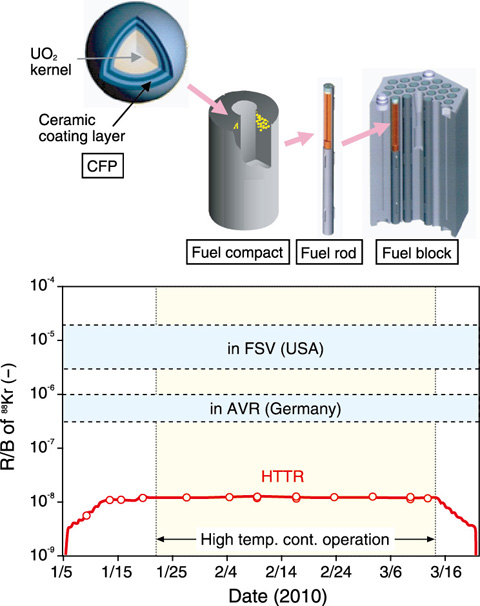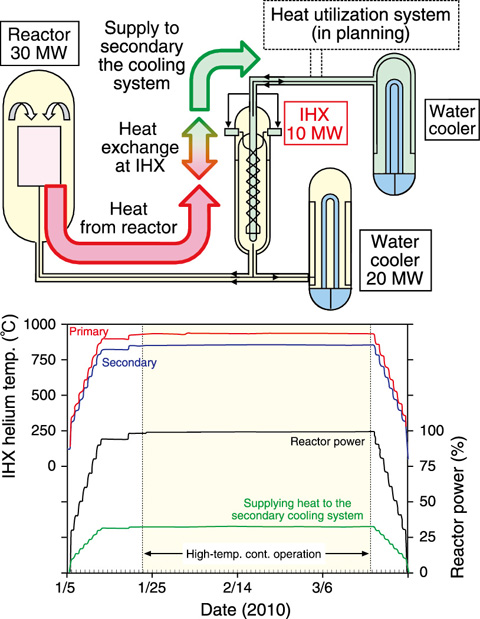
Fig.13-18 Confinement performance of HTTR fuels

Fig.13-19 Heat exchange performance of the IHX
The high-temperature gas-cooled reactor (HTGR) is attractive worldwide because of its inherent safety features, multipurpose heat utilization, and high-efficiency power generation. The high-temperature engineering test reactor (HTTR) was constructed as the first HTGR in Japan and achieved a reactor outlet coolant temperature of 950 °C, which was the highest temperature reported anywhere in April 2004.
To use an HTGR as a commercial reactor for power generation or hydrogen production, it was necessary to demonstrate that an HTGR could supply high-temperature heat to a heat utilization system stably for a long period. In the HTTR, 50 days of high-temperature operation at a maximum reactor outlet coolant temperature of 950 °C was achieved in 2010 for the first time anywhere. The fuel performance and heat-supplying characteristics of the high-temperature equipment for long-term continuous high-temperature operation were evaluated during operation.
Coated fuel particles (CFPs) are used as HTTR fuel. It was necessary to confirm the integrity of the CFPs [their fission product (FP) confinement performance] for long-term continuous high-temperature operation. The release/birth rate (R/B) of 88Kr, which is a typical FP, during operation was estimated. The results confirmed that the R/B during operation was almost constant and was the same as that in previous operation. Moreover, the integrity of the CFPs is ensured and the CFPs exhibited high FP confinement performance for a long duration (Fig.13-18).
The intermediate heat exchanger (IHX) is part of the high-temperature equipment in the HTTR. It is very important for stably supplying heat generated in the reactor to the heat utilization system. The primary/secondary helium temperature and heat supplied to a secondary cooling system during the present operation were evaluated. The results confirmed that they were in a stable state during operation, and the IHX could stably supply high-temperature heat to the secondary cooling system for a long period (Fig.13-19).
These results demonstrated that an HTGR could stably supply heat for a long period.
We were awarded the “Award for Distinguished Technology Development 2012 of the Atomic Energy Society of Japan” for these results.